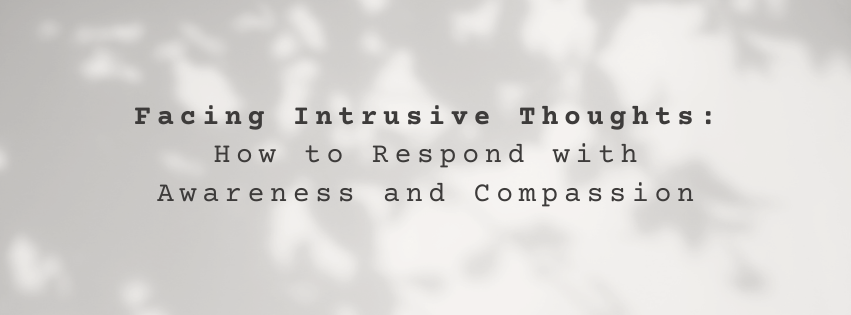Intrusive thoughts can feel alarming, confusing, or even shameful—but they are far more common than people realize. At Barksdale Missions, we believe in removing the stigma and offering compassionate guidance to help individuals face these experiences with clarity and self-kindness.
Understanding the Nature of Thoughts
Before diving into how to manage intrusive thoughts, it helps to understand what thoughts really are. Every thought we have is shaped by mood, memory, past experiences, and perception. They’re not facts—they’re mental events.
Some thoughts feel joyful or exciting, like “I can’t wait for my vacation!” Others might feel neutral or even distressing. Most pass quickly. But some—especially the uncomfortable ones—tend to stick around.
Why? Because we often assign meaning to them based on our fears or beliefs about ourselves and the world.
What Are Intrusive Thoughts?
Intrusive thoughts are sudden, unwanted mental images or ideas that can feel disturbing or out of character. Most people experience them from time to time—like a fleeting thought of shouting in a quiet room, or wondering, “What if I veered into traffic?”
These thoughts often focus on harm, taboo topics, or exaggerated fears. Common themes may include:
- Fear of harming yourself or others (even accidentally)
- Upsetting sexual or violent images
- Thoughts that contradict your values or beliefs
It’s important to remember: intrusive thoughts do not reflect your intentions. They’re often distressing precisely because they conflict with who you are.
Why Do Intrusive Thoughts Linger?
Intrusive thoughts often persist because we react to them with fear, guilt, or confusion. We might worry they reveal something dark within us—but they don’t. These thoughts stick not because they’re true, but because we fight them, fear them, or try to avoid them.
How to Cope with Intrusive Thoughts
1. Separate Thought from Fact
A thought is just that—a thought. It is not evidence, not intention, and not a prediction. Remind yourself: This is uncomfortable, but it’s not dangerous.
2. Recognize There’s a Difference Between Thoughts and Actions
Having a disturbing thought does not mean you will act on it. Thoughts can be bizarre, upsetting, or out of line with your values. That doesn’t mean they’re real or worthy of belief.
3. Build Distress Tolerance
Instead of avoiding or resisting these thoughts, practice sitting with them in a safe space. Learning to tolerate distress can reduce the power these thoughts have over time.
Here are four tools to help:
- Name the Emotion: Where do you feel it in your body? Is it tension in your jaw, racing heart, clenched hands?
- Practice Non-Judgment: Try not to label emotions or thoughts as “bad” or “wrong.” They’re simply signals—not facts.
- Use Visualization: Imagine your thoughts as clouds passing in the sky or leaves floating on a stream. Let them come, and let them go.
- Ground Yourself in the Present: You are here, safe, and breathing. Use mindfulness or grounding exercises to return to the now (see below for tips).
Key Reminders for Your Journey
Intrusive Thoughts ≠ Your Identity
- These thoughts do not define you.
- They are temporary, and they do not reflect your morals or desires.
- You are not alone in experiencing them.
Self-Compassion Over Shame
- Treat yourself with kindness instead of harshness.
- If a friend shared the same thought with you, how would you respond? Offer yourself the same grace.
- Healing starts with gentleness, not judgment.
Rebuilding Self-Trust
- Trust doesn’t happen overnight—it grows through small, intentional steps.
- Choose actions that reflect your values, even when you’re feeling unsure.
- Accountability is healthy; self-punishment is not necessary to grow.
Grounding Techniques for Intrusive Thoughts
Try these tools to stay present when overwhelmed:
- 5-4-3-2-1 Exercise:
Name 5 things you can see,
4 things you can touch,
3 things you can hear,
2 things you can smell,
1 thing you can taste. - Deep Breathing:
Inhale slowly for four counts, hold for four, exhale for four. Repeat until your body calms.
The Power of Self-Forgiveness
Mistakes, intrusive thoughts, or emotional struggles don’t make you unworthy of care. Forgiveness is not approval—it’s permission to move forward and grow.
You are not your thoughts. You are the observer of them. And the fact that they bother you says more about your integrity than anything else.
Need Support?
If you’re struggling with intrusive thoughts, know that help is available. You don’t have to navigate this alone. At Barksdale Missions, we’re here to support your mental and emotional wellness with compassion and understanding.
Written for educational purposes. If you’re in crisis or need immediate support, please contact a mental health professional or local crisis line.
References
American Psychiatric Association. (2022). Diagnostic and statistical manual of mental disorders (5th ed., text rev.; DSM-5-TR). American Psychiatric Publishing.
Clark, D. A. (2005). Cognitive-behavioral therapy for OCD. Guilford Press.
Rachman, S. (1997). A cognitive theory of obsessions. Behaviour Research and Therapy, 35(9), 793–802. https://doi.org/10.1016/S0005-7967(97)00040-5
Wegner, D. M. (1994). Ironic processes of mental control. Psychological Review, 101(1), 34–52. https://doi.org/10.1037/0033-295X.101.1.34
Williams, M. T. (2021). The unapologetic guide to Black mental health: Navigate an unequal system, learn tools for emotional wellness, and get the help you deserve. New Harbinger Publications.
